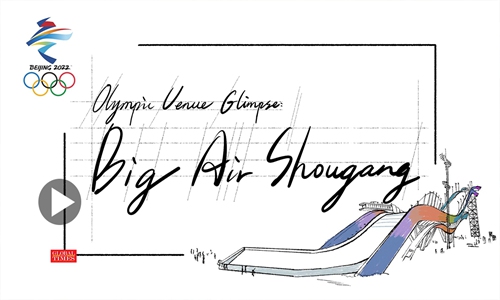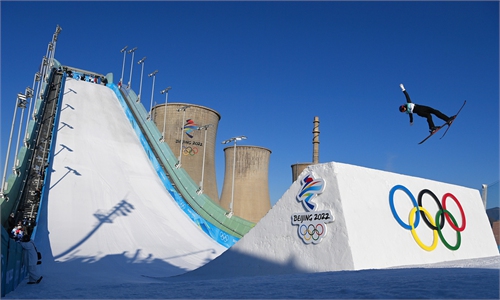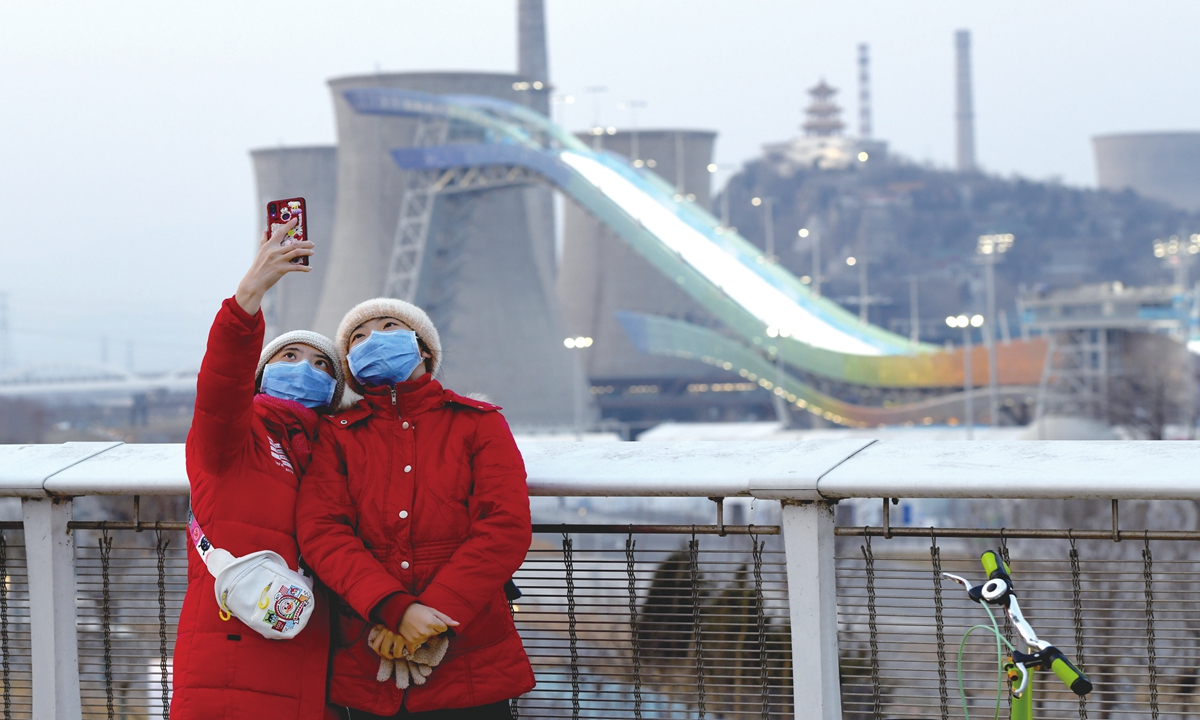
Tourists take a selfie with the Shougang Ski Jump Platform on February 10 on the New Shougang Bridge.Photo: cnsphoto
The symbolic significance of Shougang Industrial Park goes beyond the jumps for mega air competition at Beijing 2022 Winter Olympic Games. Shougang, a former industrial site that dates back to 1919, has been transformed into a vibrant community that has set an example for urban regeneration.The cyberpunk, futuristic, industrial style theme park has witnessed Chinese snowboarder Su Yiming's gold in the men's snowboard big air final on Tuesday. The venue also witnessed Gu Ailing's historic gold in the women's freeski big air of the Beijing 2022 on February 8. Netizens have begun calling the venue "a lucky place."
Gu later shared that she liked the venue very much personally, and in fact all the other athletes told her that Big Air Shougang is the best venue they have ever had.
The new ski pavilion, shaped like a "high-heeled shoe," has become a new landmark building of Shougang Park. Shougang Park features a steep, twisting ramp that will remain in place after the Games, the first permanent big air venue in Olympic history.
Foreign media have smeared the Big Air Shougang by saying the mills in the park are nuclear reactors. In fact, not only is it not the source of "nuclear pollution," but it is an excellent case of environmental protection and an old factory being reused.
Rebirth of industrial park
The Shougang Park has become a bustling hub for tourism, sport and cultural events. But it was once the burning heart of Beijing's industrial complex and was "a city within a city."
After Shougang's relocation, any building deemed structurally safe was kept as intact as possible on the 8.63-square-kilometer land.
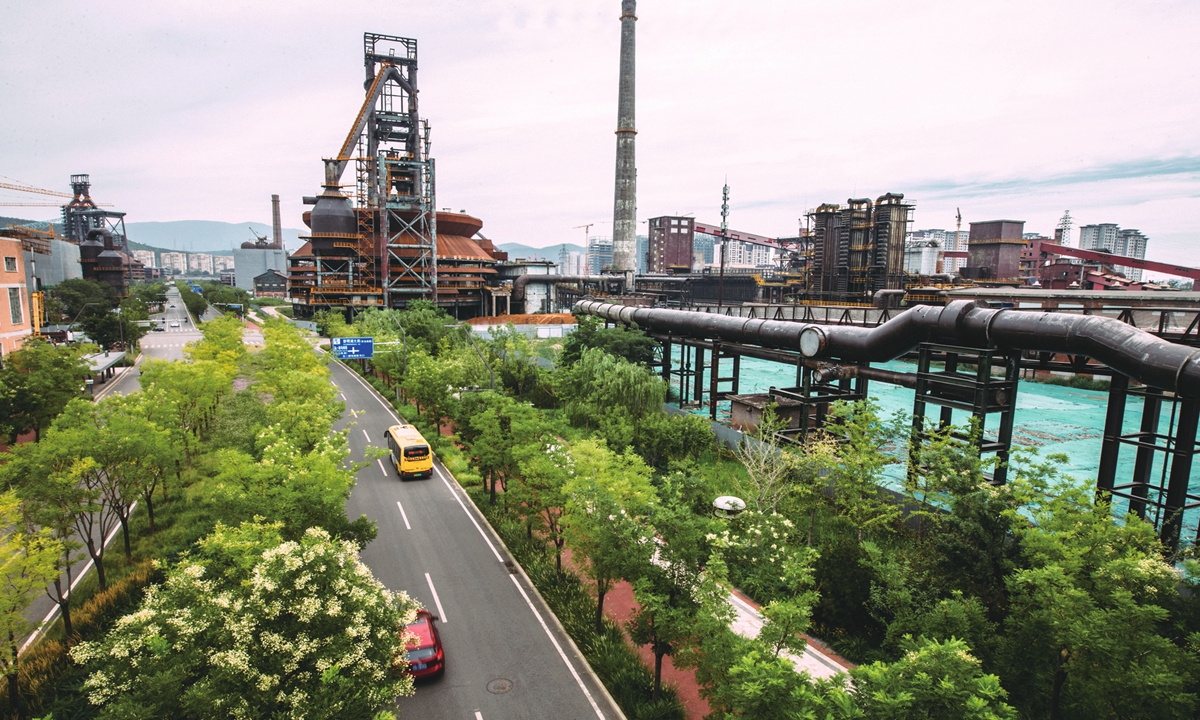
The Shougang Industrial Park in Beijing on July 25, 2020 Photo: Li Hao/GT
Cooling towers have been transformed into Olympic venues, blast furnaces into training centers and an iron ore storage tower has even become home to the headquarters of the Beijing Organizing Committee for the 2022 Olympic and Paralympic Winter Games, said the International Olympic Committee (IOC).
"Shougang Park will be for a long time a symbol of urban regeneration," said Marie Sallois, IOC Director for Sustainability. "It is an impressive example showing how with creativity, drive and innovation we can transform city landscapes into more livable, citizen-friendly and greener spaces."
It is located in western Beijing's Shijingshan district and local residents more or less have a relationship with the Shougang Group.
A former worker at Shougang surnamed Wen, told the Global Times that he retired when Shougang moved out of Beijing. He was 50 years old and got compensation. Wen's wife, parents and grandparents were all workers at Shougang.
Wen said that he is very happy to see the rebirth and vitality in the place where he used to work.
"As an industrial theme park, Shougang is already a pioneer. I didn't expect it to be used as a venue for the Winter Olympics. The idea of turning waste into treasure is worth learning from, and the preservation of such an industrial site is also a history of environmental changes in Beijing. Major demolition and construction have been avoided," said Wen.
Photojournalist Li Hao has deep roots with Shougang as he grew up in the Shougang Industrial Park.
"Reporting the Beijing 2022 in Shougang just feels like coming back home. I can name all the buildings, all the mills, all the chimneys around the Big Air Shougang. It was so intimate to be able to photograph the athletes in such an environment," Li told the Global Times on Monday.
Now Shougang has established a cultural brand for its self-produced soda drink and sold it in supermarkets in the park, said Li.
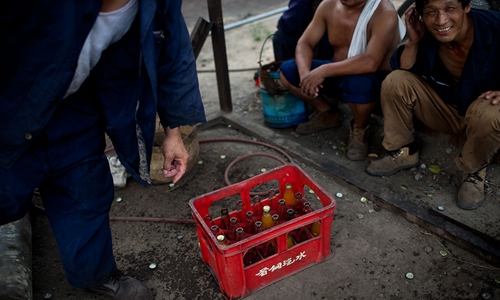
Back in the day, Shougang also produced its own soda.Photo:Li Hao/GT
Past and present
The company of Shougang was founded in 1919. In 1937, invading Japanese troops seized the iron works during the War of Resistance against Japanese Aggression (1931-45). Until 1948, the People's Liberation Army liberated the plant.
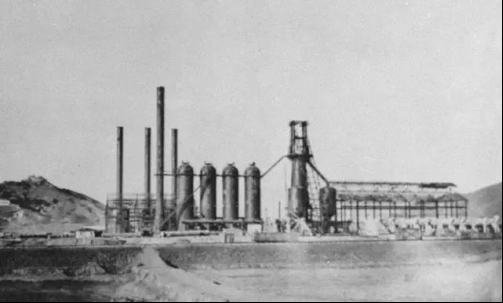
In September 1919, Shougang, which named Shigang at the time, began to build an iron-making furnace with a daily production capacity of 250 tons. Photo: Xiangshan Revolution Memorial Museum
During its very first 30 years, plant produced less than 300,000 tons of iron. Production resumed in June 1949 and Shougang became the first state-owned iron and steel enterprise in Beijing of the People's Republic of China.
By 1952, Shougang exceeded the designed production capacity, with an annual output of 344,000 tons of pig iron. In 1978, Shougang became one of the eight key steel enterprises in China, with 40 plants under management and 71,000 employees.
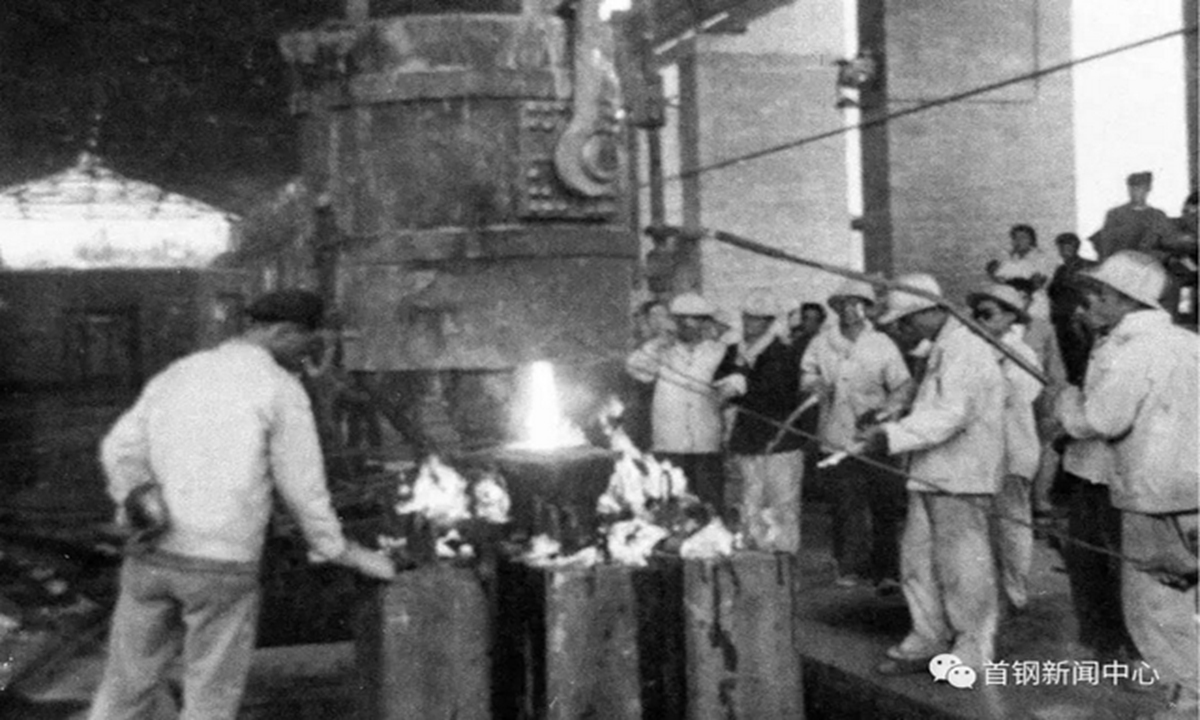
In September 1958, the staffers of Shougang built a 3-ton side-blown converter after 14 days and nights of hard work. Photo: Shougang press center
In 1994, Shougang expanded its steel output from 1.79 million tons in 1978 to 8.24 million tons, ranking first in China. Tax revenue from Shougang once accounted for a quarter of Beijing's total volume.
At the beginning of this century, Beijing won the bid for the 2008 Olympic Games. Shougang began the process of moving to North China's Hebei Province in 2005 to ensure air quality in the capital. In the construction of the new factory, China's independent innovation technology accounted for two-thirds of total.
On December 19, 2010, the last batch of steel was produced, marking that Shougang's Beijing plant officially ended production and entered a new process of transformation and development.
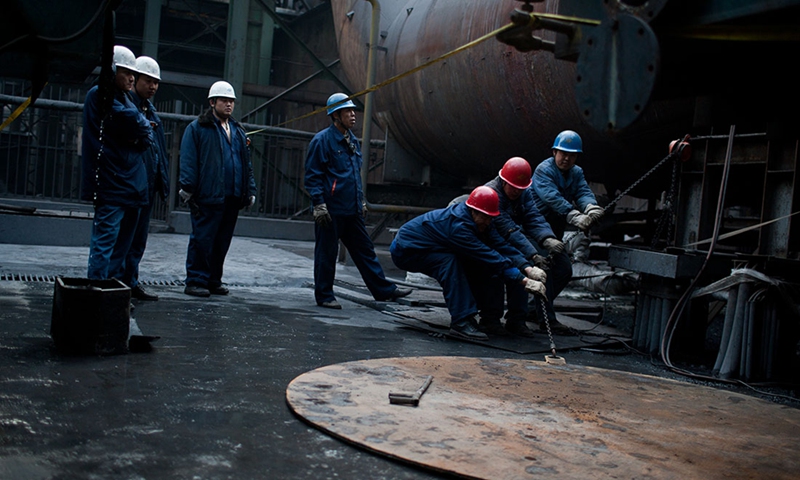
Workers shut down boilers at Shougang in Beijing. Photo: Li Hao/GT
Behind the relocation, Shougang received support from countless ordinary families, Hou Jiajing, author of Tale of a Family in Shougang, told the Global Times on Monday.
"Many people retired early. There are also many people who chose to go to Hebei's Caofeidian and other plants of Shougang to work. But they still live in Shijingshan and take the shuttle bus home on weekends," said Hou.
What sets Shougang apart from other companies is the number of families who have worked there for almost three or even four generations. The families themselves are a microcosm of China's industrial transformation, Hou noted.
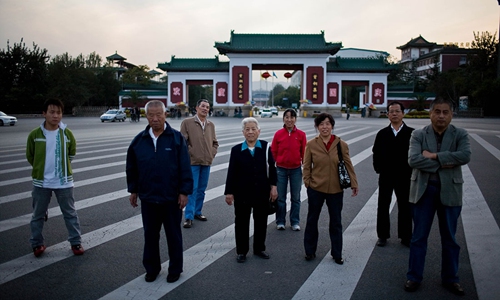
Li Chaoxing, 85,and his family's history is intertwined with Shougang. Three generations of their family members have worked at Shougang.Photo: Li Hao/GT
Urban upgrade
Shougang is a testament to Beijing, the capital city's 20-year transformation from heavy and chemical industries to services. The history of Shougang is also an epitome of the change in China's development philosophy, from GDP dominated development, to green and sustainable development, which is interpreted as "lucid waters and lush mountains are invaluable assets."
In the 20 years since Beijing won the bid for the Olympic Games in 2001, significant changes have taken place in Beijing, whether in the improvement of the vitality of the city, the adjustment of the industrial structure, the positioning of the city, the improvement of the transportation facilities and the cultural and ecological environment.
The process of urban renewal and industrial upgrading complement each other. With the change of Beijing's urban positioning, the industrial structure of the city has gradually changed from industry oriented several decades ago to service oriented today.
By the end of 2021, the added value of Beijing's tertiary industry - service industry - had reached 3.29 trillion yuan ($518.2 billion), 3.5 times that of 2008 and 12.4 times that of 2001, according to statistics from the Beijing Bureau of Statistics.
The proportion of tertiary industry in GDP also rose from 68.7 percent in 2001 to 77.67 percent in 2008 and to 81.7 percent in 2021.
The transformation of Shougang is just a symbol of China's national confidence, an urban management analyst surnamed Dai, told the Global Times on Monday.
For the 2008 Olympic Games, in order to present the best side to the world, China built a lot of buildings and stadia. A total of 6,037 households and 10,355 people were relocated during the construction of various Olympic venues. But the construction of the 2022 Olympic venues has moved only a few hundred households, affecting fewer than 2,000 people, according to Dai.
"We are more confident. China would like to show the scars of history, vicissitudes of life and the greatness of the present to the world, so that everyone can understand the hardships of our pioneering work in the past 100 years," said Dai.
